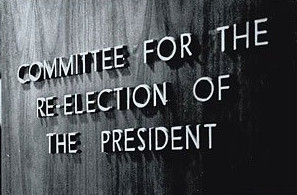Difference between revisions of "Townhouse Operation"
(Created page with "{{event |wikipedia= |constitutes= |historycommons=http://www.historycommons.org/entity.jsp?entity=townhouse_operation_1 }} The '''Townhouse Operation''' was a slush fund used...") |
m |
||
| (3 intermediate revisions by the same user not shown) | |||
| Line 1: | Line 1: | ||
{{event | {{event | ||
| − | | | + | |image=Townhouse Operation.jpg |
| − | |constitutes= | + | |constitutes=blackmail |
|historycommons=http://www.historycommons.org/entity.jsp?entity=townhouse_operation_1 | |historycommons=http://www.historycommons.org/entity.jsp?entity=townhouse_operation_1 | ||
| + | |planners=US deep state | ||
| + | |description=The Townhouse Operation was a [[US deep state]] operation to gain leverage over US [[politicians]]. | ||
}} | }} | ||
| − | |||
| − | + | The '''Townhouse Operation''' was a project to create a suspicious looking slush fund used by [[Richard Nixon]]'s campaign in the 1970 US Presidential Election. It was set up by the [[US deep state]] to exert leverage over US politicians. | |
| − | + | ==Operation== | |
| + | The plan distributed $6,000 in cash to selected candidates. Legally, the law required that they disclose this donation, but whether accidentally or on purpose, some may have failed to do so.<ref>http://www.nytimes.com/1992/06/11/us/files-detail-aid-to-bush-by-nixon-white-house.html</ref><ref>http://www.nytimes.com/2010/10/17/weekinreview/17abramson.html</ref> [[George H. W. Bush]] was a recipient of such cash, which [[Russ Baker]] suggests in ''[[Family of Secrets]]'' may have been an effort to hide his involvement in the plan. | ||
| + | |||
| + | ==Exposure== | ||
| + | The plan came under the scrutiny of [[Watergate]] prosecutors. It was called the "Townhouse Operation" because it was operated out of a townhouse on Nineteenth Street, in a residential area near Dupont Circle in Northwest Washington, a venue that was chosen in order to look suspicious.<ref>https://whowhatwhy.org/2017/06/29/watergate-downing-nixon-part-3/</ref> | ||
{{SMWDocs}} | {{SMWDocs}} | ||
==References== | ==References== | ||
{{reflist}} | {{reflist}} | ||
| − | |||
Latest revision as of 15:55, 5 March 2019
 | |
| Planners | US deep state |
|---|---|
| Description | The Townhouse Operation was a US deep state operation to gain leverage over US politicians. |
The Townhouse Operation was a project to create a suspicious looking slush fund used by Richard Nixon's campaign in the 1970 US Presidential Election. It was set up by the US deep state to exert leverage over US politicians.
Operation
The plan distributed $6,000 in cash to selected candidates. Legally, the law required that they disclose this donation, but whether accidentally or on purpose, some may have failed to do so.[1][2] George H. W. Bush was a recipient of such cash, which Russ Baker suggests in Family of Secrets may have been an effort to hide his involvement in the plan.
Exposure
The plan came under the scrutiny of Watergate prosecutors. It was called the "Townhouse Operation" because it was operated out of a townhouse on Nineteenth Street, in a residential area near Dupont Circle in Northwest Washington, a venue that was chosen in order to look suspicious.[3]